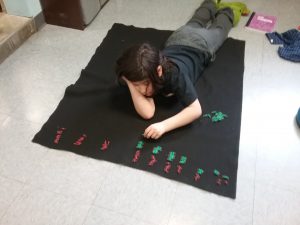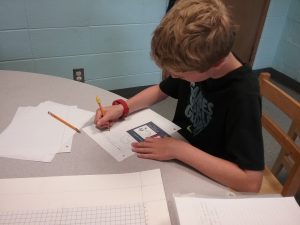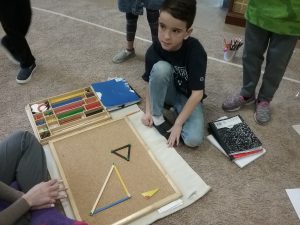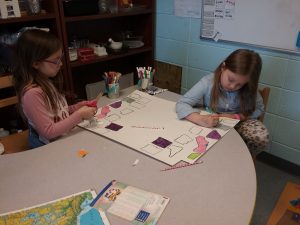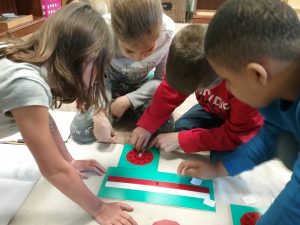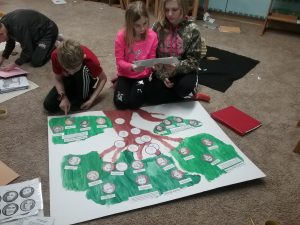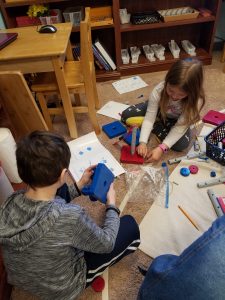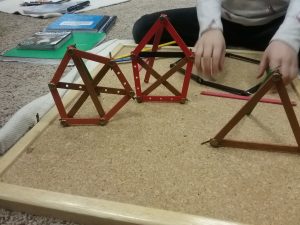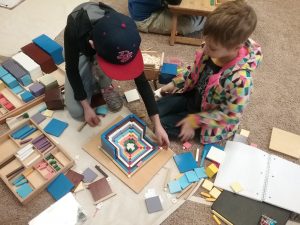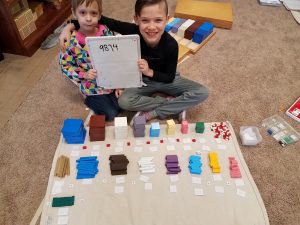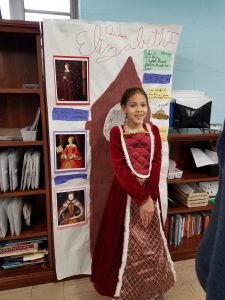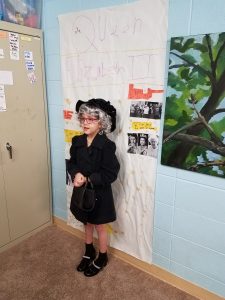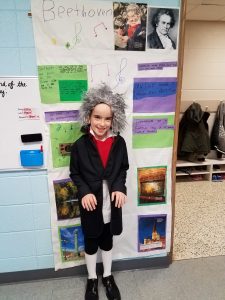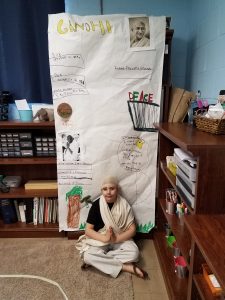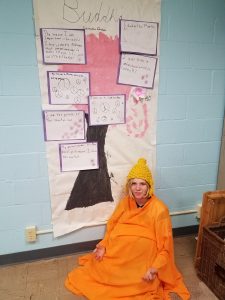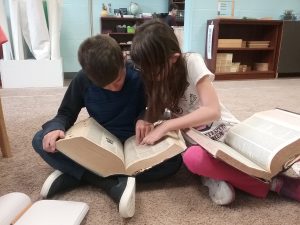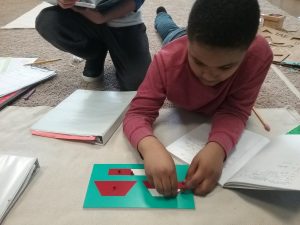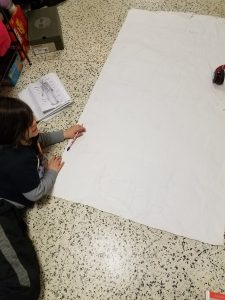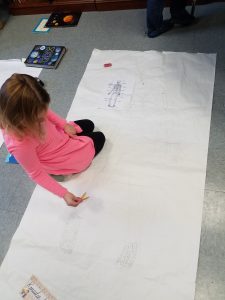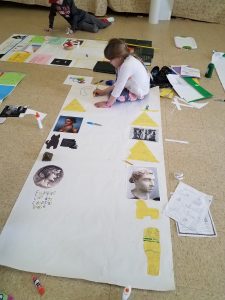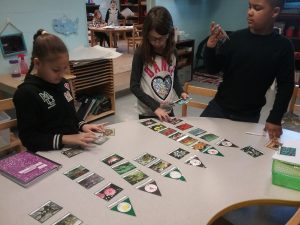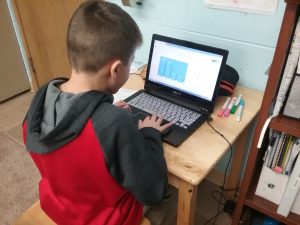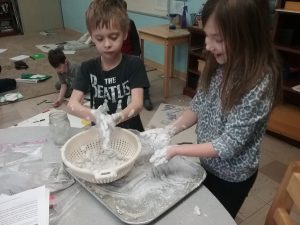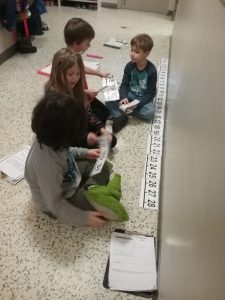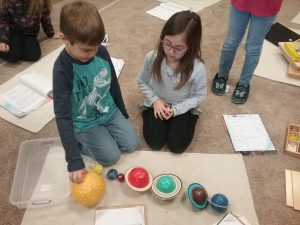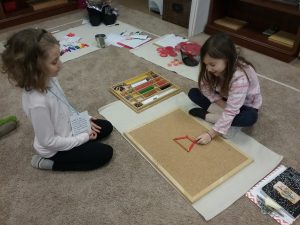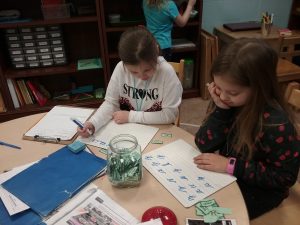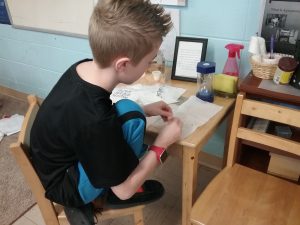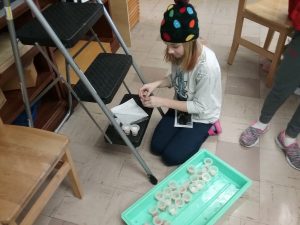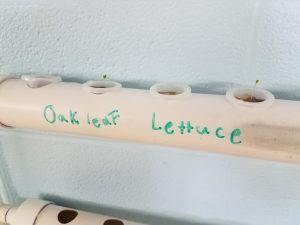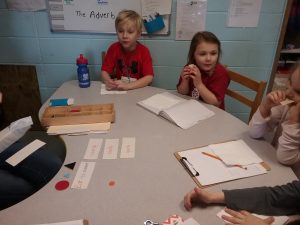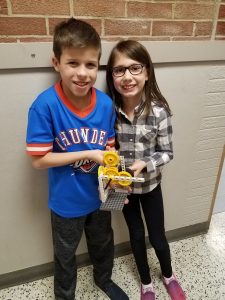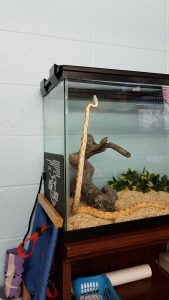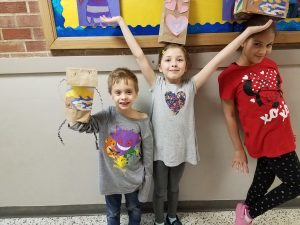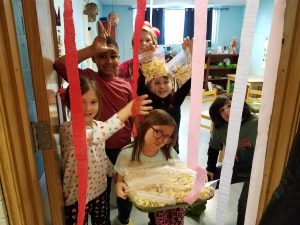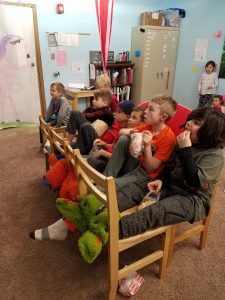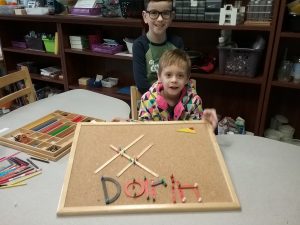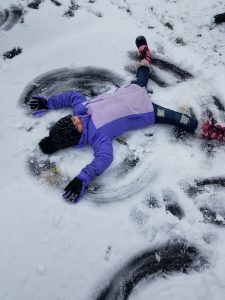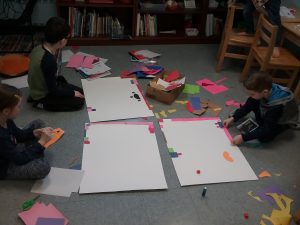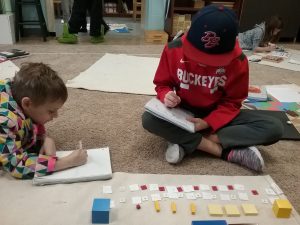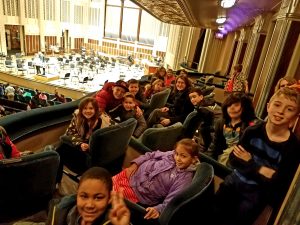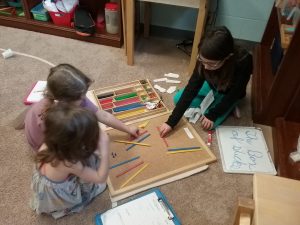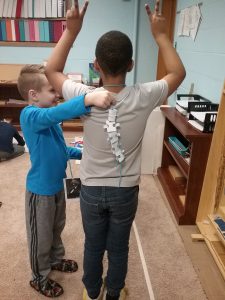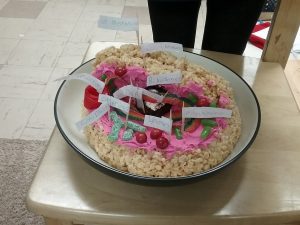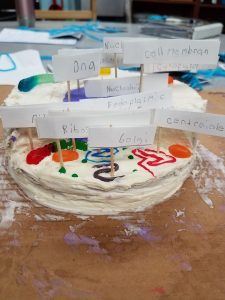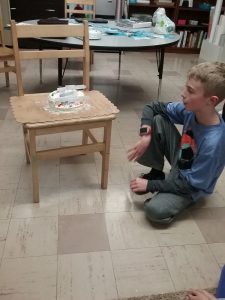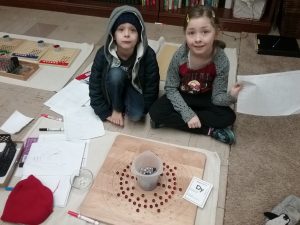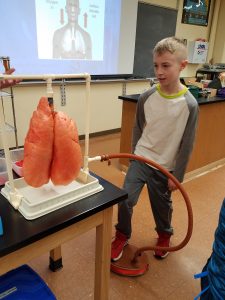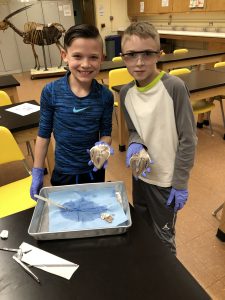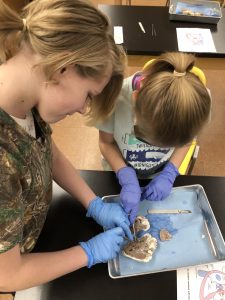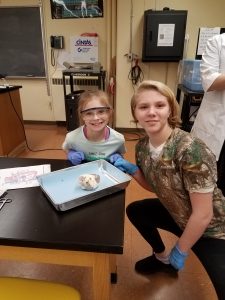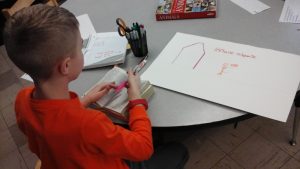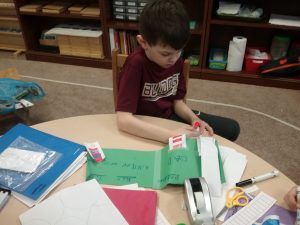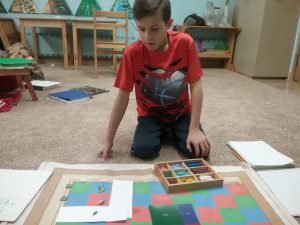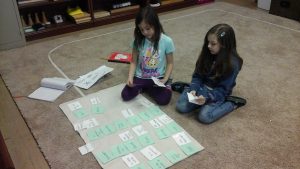This week our “Peek” was written by a few of our students! These students read our previous blogs, took pictures around the room, and filled in a blog template. The students did some editing together, and with a teacher, so what you will read below is their final product. There are still some misspelled words in their final product, but in a Montessori classroom we focus on the process, instead of the end result. Dr. Montessori believed when we put all of the emphasis on the final product, we devalue everything leading up to that point. This can discourage repetition which will make mastery of a skill difficult. The purpose of the students writing the blog is to provide you with a glimpse into the room through their eyes, to provide them with practice of real world skills, and to give them a deeper understanding of the materials in the room. We hope you enjoy their work!
“A Peek at Our Week” by the Ellie and Reese
This week the first graders learned about adding and subtracting on a number line. The second years learned about larg bead fram multiplicashun. The third years learned about Pythagorean Theorem. Upper Elementary learned about how to bisect the base.
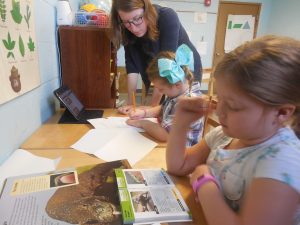
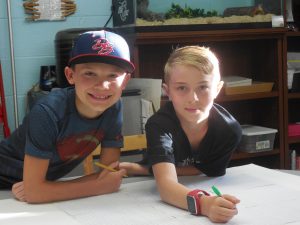
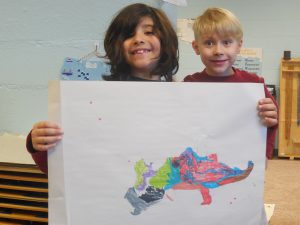
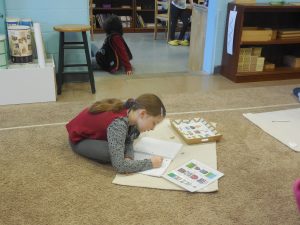
“A Peek at Our Field Trip and Next Week” by Ms. Ashley
We loved our visit to the McKinley Museum! While there, we visited “Discovery World,” the planetarium, and the McKinley Monument. In “Discovery World,” we were introduced to Alice the Allosaurus, saw the fossils of a triceratops, mosasaur, and some animals from the Pleistocene Ice Age! We were also able to see animals from North America like another corn snake named Kernel, catfish, bees, and a tarantula! Once we visited with the live animals, we went to the science area. Students were able to try different experiments, which you will see below. We enjoyed the planetarium and learned a lot about the construction of the Memorial after climbing all the stairs!
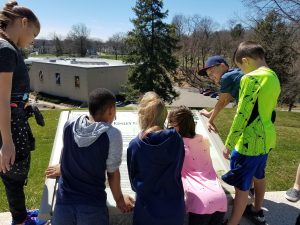
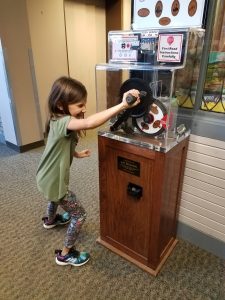
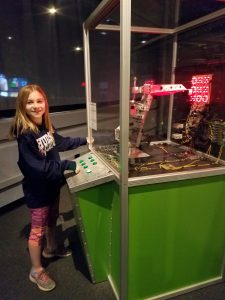
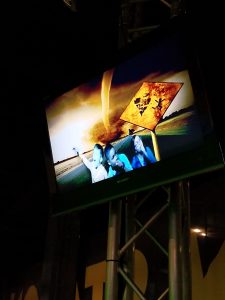
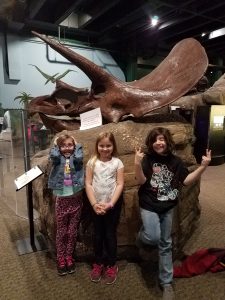
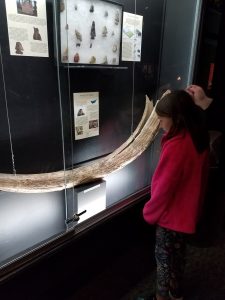

Next week, we will continue working on our models and songs for the International Festival. Please refer to the previous email for what your child needs to wear and what food you can bring. Our first year students will find the commutative pairs in our Decanomial, will review parts of speech and discuss the conjunction, will begin studying energy transformations, and will be introduced to the echinoderms! Our second year students will solve length word problems, will review conjunctions, will find the height and orthocenter of a triangle, and will experiment with oily feathers to learn about oil spills. Our third year students will multiply fractions by a whole number, will review how to use quotation marks, and will classify phyla of plants. Our fourth year students will add integers, will discuss the old world Homo sapiens, will learn about gerunds, and will classify fungi. Our fifth year students will multiply on the decimal checkerboard, find the area of a circle, and will study glaciers.
REMINDERS:
- NO SCHOOL – Monday, April 22 – Easter Monday
- Wednesday, May 1 – International Festival Practice
- Friday, May 3 – International Festival
- We still need parent volunteers to monitor our typing lessons. Sign up here.
- Mark your calendars – Optional Parent-Teacher Conferences will be held the week of May 13-17, before and after school. A link to sign up will be sent through Remind and the blog soon.
- FINAL Parent Work Time in May – Sign up here.

